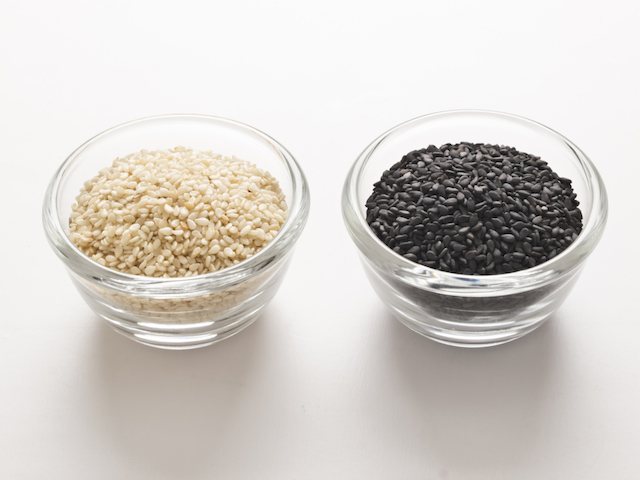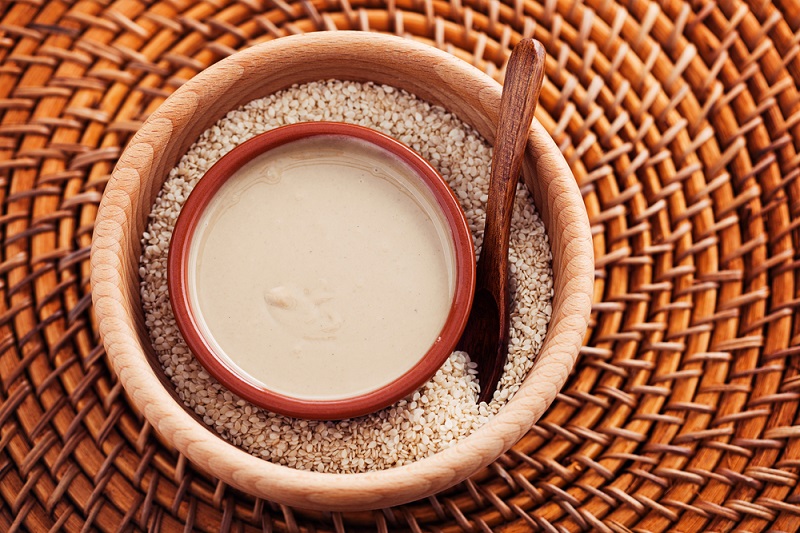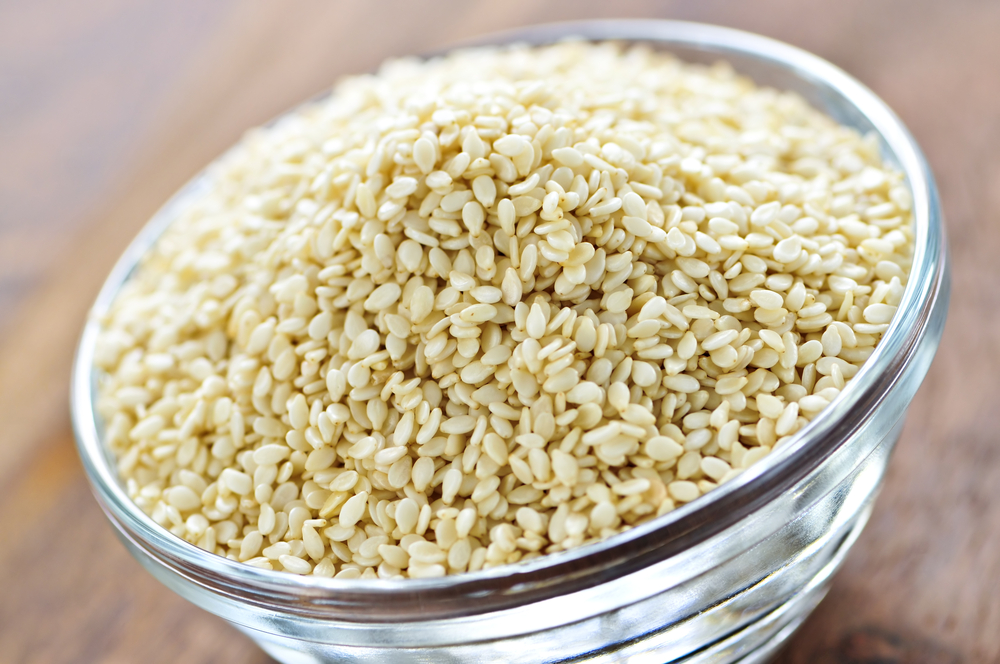- Home
- Blog
- Super Foods
- Open Sesame (seeds)! Nutrition secrets you need to know.
Open Sesame (seeds)! Nutrition secrets you need to know.
Written by Catherine Saxelby
on Wednesday, 07 July 2021.
Tagged: calcium, healthy cooking, healthy eating, nutrition, seeds, super foods

There’s a lot to know about sesame seeds. Join me as I delve into their nutritional value and show you how you can use them in your everyday cooking.
A sesame history
Sesame seeds (Sesamum indicum) are the oldest oilseed crop, having been domesticated well over 5,000 years ago. They have the highest oil content of any seed and a rich nutty flavour. Sesame is a star ingredient in Middle Eastern foods such as tahini, the confection halva and sesame-honey cakes.
Something you may not know … sesame seeds come in many colours like white, beige, tan, gold, brown, reddish, grey and black but I’ll mainly be referring to the white version.

What’s in sesame?
Sesame is worth including in a big way in your diet as it packs a 22 per cent protein punch coupled with a high calcium content.
The seeds contain over 50 per cent oil, with little saturated fat and a mix of polyunsaturates and mono-unsaturates. There’s not much carbohydrate or sugars but a decent hit of fibre - some 11 per cent fibre.
You’ll also get almost no sodium and some surprising mineral finds. In addition to calcium and potassium you’ll get magnesium, phosphorus, copper and zinc, all of which are helpful for strong bones.
The seeds need to be crushed or ground to release their full nutrition package. There’s research to show that the fat and minerals contained in whole seeds is not well absorbed; the outer seed coat does not break down easily as it’s designed to protect the seed inside, which is the ‘baby plant’ that will grow into maturity. So whole seeds tend to pass through you undigested giving you their fibre and flavour, but not much more.
So, if you seek their rich content of oils, minerals and vitamins, it’s best to consume them ground in the form of seed butters such as tahini.
What is tahini?
Tahini is a paste, purée or butter made from sesame seeds in which the seeds are finely ground into a smooth runny paste. You can buy hulled or unhulled seeds. The latter has a stronger flavour and more fibre. Sesame seed hulls are often removed since they contain 2 to 3 percent oxalic acid, which can interfere with the absorption of calcium and give a bitter flavour.
Additionally, you can use tahini in place of peanut butter or hummus which adds good fats to your diet. Because it’s thinner, tahini can also be added to salad dressings or used as a dip for vegetables.

Nutrition stats
Per serve:
Two tablespoons white sesame seeds with no added salt (weighing 30 grams or 1oz)
7 g protein, 17 g fat, almost no starch, almost no sugars, 3 g dietary fibre, 7 mg sodium and 785 kilojoules (187 Calories).
Per 100 grams (3 1/2oz):
22 per cent protein, 56 per cent fat, almost no starch, 2 per cent sugars, 11 per cent dietary fibre, 24 mg sodium and 2620 kilojoules (623 Calories).
The calcium in sesame seeds
Like almonds, sesame seeds have a surprisingly high content of calcium (975 mg compared to 120 mg of calcium per 100 grams for milk), but how well this is absorbed is debatable. Per 10 g tablespoon, this is equivalent to over 90 mg calcium per serve, which is pretty impressive. However, keep two things in mind:
- Firstly, the seeds must be ground to release their calcium as we can’t break down their indigestible outer seed coat (see above).
- Secondly, it’s unlikely their calcium is as well absorbed as it is from milk. As a rough guide, I’d take half the quantity of calcium, but no-one has tested this assumption so far.

How to use sesame seeds in your daily diet
Like nuts, they add plenty of flavour to your recipes and a little goes a long way. Think of it as a nutritious garnish. They can be used whole or ground, raw or toasted, in sweet and savoury recipes. You can sprinkle sesame seeds on:
- Stir-fries
- Vegetables like beans or broccoli
- Salads
- Soups
- Roll rissoles or vegetable patties in them before frying
I find tahini is easy to use and great for adding to yoghurt, dips and satay-like sauces. Think of it as a healthy fat supplement—it’s a mix of polyunsaturates and mono-unsaturates in almost equal amounts—with little carbohydrate, lots of protein and fibre.
To toast the seeds, I place ½ cup of sesame seeds in a dry pan over low heat, moving constantly for even cooking for 2-3 minutes, until they turn a golden colour. Store in a glass jar until all used.
The bottom line
Sesame seeds are an inexpensive, filling and nutritionally-impressive food. Use them liberally for flavour and nutrition. Allergy to sesame seeds has become more prevalent, so you may need to be cautious when cooking for groups. Leave them on the side so people can add them or not. Prevalence is higher in people who have allergic reactions to other foods such as peanuts or soy beans.
Interesting fact: Sesame seeds are often used toasted by vegetarians who miss their bacon as it has a similar flavour.
Foodwatch
The Good Stuff
The Boring Stuff
© 2025 Foodwatch Australia. All rights reserved
Website by Joomstore eCommerce





